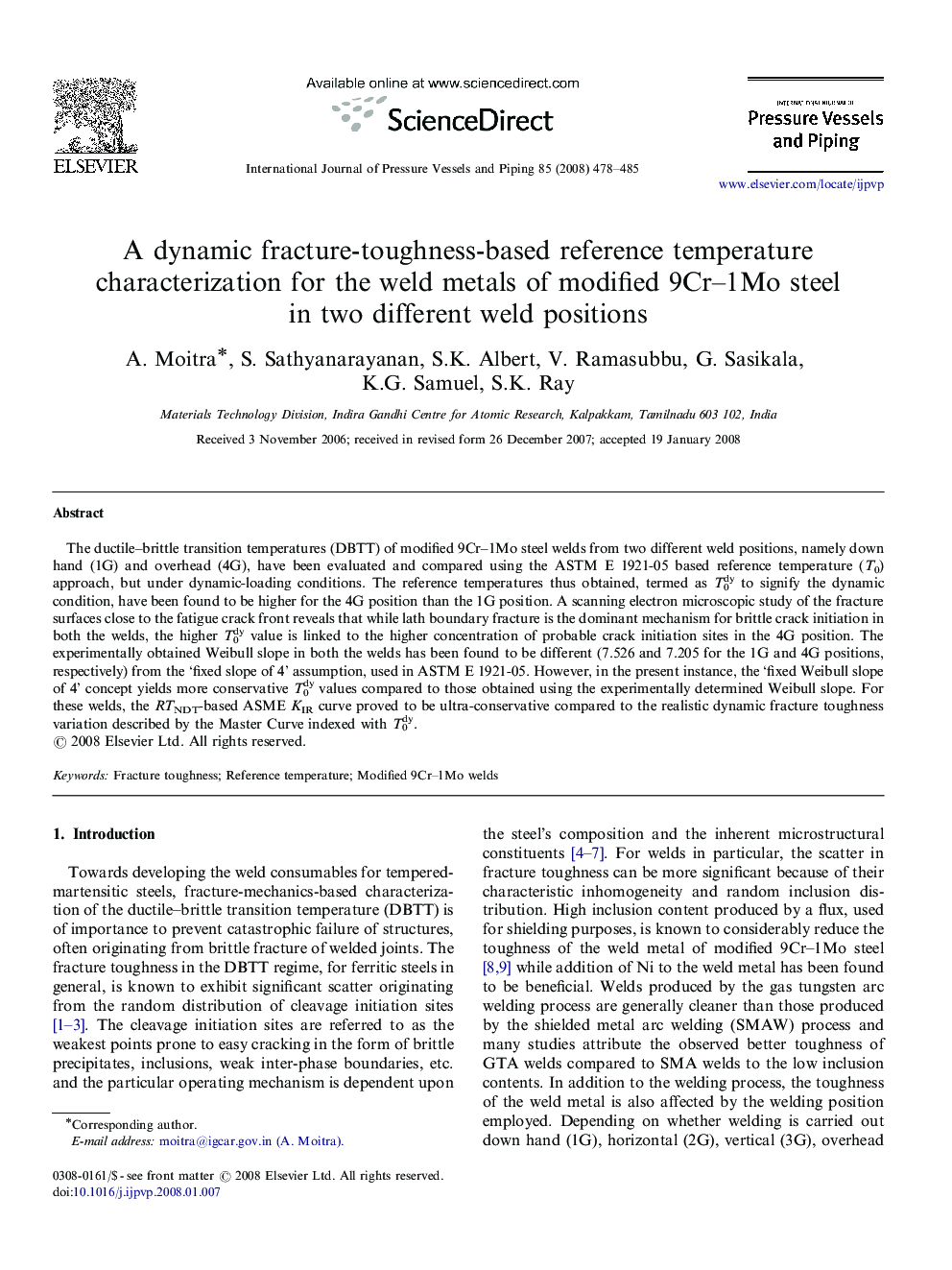| کد مقاله | کد نشریه | سال انتشار | مقاله انگلیسی | نسخه تمام متن |
|---|---|---|---|---|
| 785607 | 1466131 | 2008 | 8 صفحه PDF | دانلود رایگان |

The ductile–brittle transition temperatures (DBTT) of modified 9Cr–1Mo steel welds from two different weld positions, namely down hand (1G) and overhead (4G), have been evaluated and compared using the ASTM E 1921-05 based reference temperature (T0) approach, but under dynamic-loading conditions. The reference temperatures thus obtained, termed as T0dy to signify the dynamic condition, have been found to be higher for the 4G position than the 1G position. A scanning electron microscopic study of the fracture surfaces close to the fatigue crack front reveals that while lath boundary fracture is the dominant mechanism for brittle crack initiation in both the welds, the higher T0dy value is linked to the higher concentration of probable crack initiation sites in the 4G position. The experimentally obtained Weibull slope in both the welds has been found to be different (7.526 and 7.205 for the 1G and 4G positions, respectively) from the ‘fixed slope of 4’ assumption, used in ASTM E 1921-05. However, in the present instance, the ‘fixed Weibull slope of 4’ concept yields more conservative T0dy values compared to those obtained using the experimentally determined Weibull slope. For these welds, the RTNDT-based ASME KIR curve proved to be ultra-conservative compared to the realistic dynamic fracture toughness variation described by the Master Curve indexed with T0dy.
Journal: International Journal of Pressure Vessels and Piping - Volume 85, Issue 7, July 2008, Pages 478–485